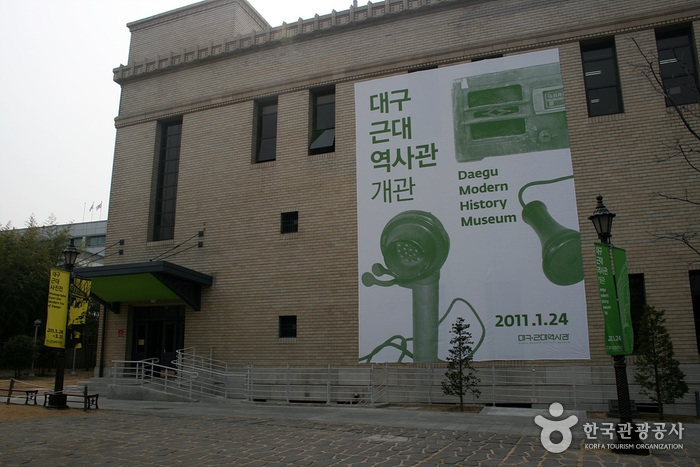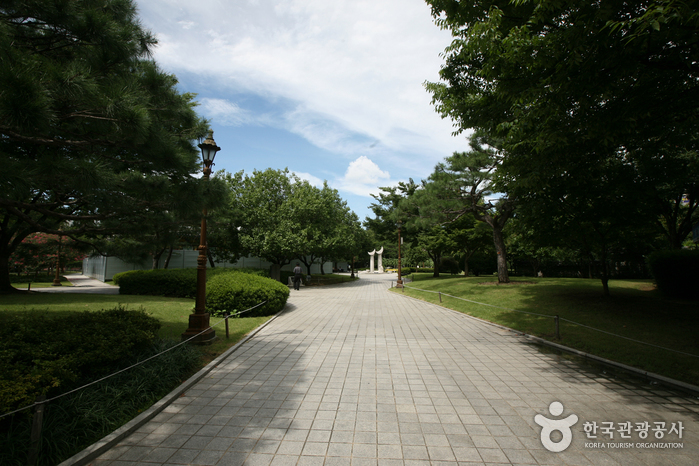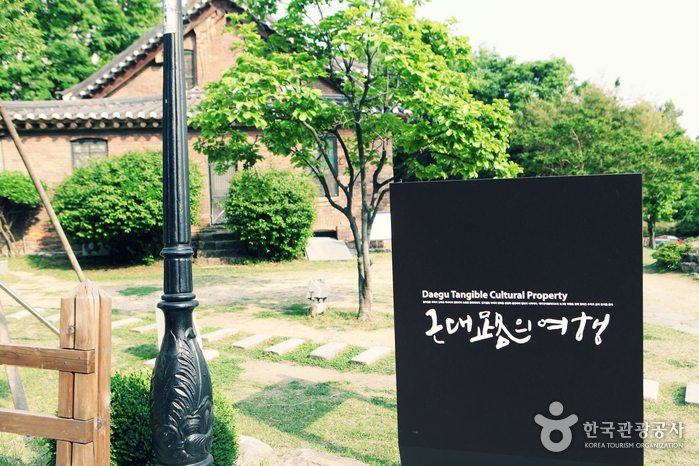Bottari - Daehyun Primall Daegu Branch [Tax Refund Shop] (보따리 대현프리몰대구)
471.1M 0 2024-04-19
B580 Gukchaebosang-ro, Jung-gu, Daegu
-
Dayilylook - Daehyun Primall Daegu Branch [Tax Refund Shop] (데일리룩 대현프리몰대구)
471.1M 0 2024-07-01
#F20-21, B580, Gukchaebosang-ro, Jung-gu, Daegu
-
February 28th Jungang Memorial Park (2.28기념중앙공원)
477.8M 0 2023-04-03
80, Dongseong-ro 2-gil, Jung-gu, Daegu
+82-53-254-9405
This park was created in 2003 to commemorate the February 28 Student Democratic Uprising in 1960 on the site of Jungang Elementary School. It is a place that contains the pain of Daegu's history from the February 28 Uprising to the March 15 Uprising and the April 19 Revolution, but now it has become a peaceful and pleasant resting place in the city center. Thanks to the cool fountain and the shade created by the beautiful trees, it is established as a park that anyone can visit comfortably, regardless of age or gender. Furthermore, there are various amenities such as a walking trail, stream, and central fountain plaza, as well as many famous restaurants nearby, serving as a convenient public area to the citizens of Daegu throughout the year.
Daegu Modern History Museum (대구근대역사관)
509.4M 13334 2021-07-20
67, Gyeongsanggamyeong-gil, Jung-gu, Daegu
+82-53-606-6430
Located in Pojeong-dong, Jung-gu, Daegu, the Daegu Modern History Museum was officially opened on January 24, 2011. The museum is housed in a building that is rich in history. First built by Japan in 1932 as a bank, the building was once a symbol of repression and exploitation during the Japanese colonial rule. Today, the building stands proudly as an educational site and bears the title of ‘Cultural Property No. 49’ in recognition of its historical and cultural significance.
The two-story museum (1,971 square meters) houses a permanent exhibition (1F), featured exhibition (2F), and a hands-on exhibition room and classroom for diverse cultural activities and lectures. The history exhibition features the lifestyle of Daegu citizens, local customs, and education of the late 19th century and the early 20th century.
Olive Young - Dongseongro Branch [Tax Refund Shop] (올리브영 대구동성로)
509.0M 0 2024-04-22
593, Gukchaebosang-ro, Jung-gu, Daegu
-
March 1st Independence Movement Road (3·1만세운동길)
514.7M 1 2023-01-20
Dongsan-dong, Jung-gu, Daegu
March 1st Independence Movement Road is a historical location where Daegu citizens gathered for the independence movement on March 8, 1919, and the midpoint of Daegu Modern Alley Tour Course 2. Passing Cheongna Hill Missionary's House and Jeil Church, you will come to a road with murals of the independence movement. The March 1st Independence Movement Road is a hilly road leading to Gyesan Cathedral. It is also called 90 Stairs because there are 90 steps. On the wall of the stairs, there is an augmented reality (AR) experience zone along with site photos from history. By scanning the QR code is a 3D video that vividly reproduces the independence movement, enabling a realistic experience of history. Follow the signs of the Daegu March 8th Independence Movement marching road to reach the main road and it will lead to the the 100th anniversary monument of the March 1st Movement and the starting point of the March 8 Movement. A guided alley tour is available for free with an online reservation on the official website.
Gyeongsanggamnyeong Park (경상감영공원)
528.1M 15204 2018-08-07
99, Gyeongsanggamyeong-gil, Jung-gu, Daegu
+82-53-254-9404
Located in central Daegu, Gyeongsanggamyeong Park was built during the 34th year of King Seonjo of the Joseon Dynasty (1601) and was the original location of Gyeongsanggamyeong (1910), the office of the Gyeongsangbuk-do governor. In 1965 the provincial office was moved to another location and the park opened its doors to the public under the name of Central Park. The park was renamed again in 1997 and has been known as Gyeongsanggamyeong Park ever since.
Many cultural and historical heritages are located in the park including the Seonhwa-dang building where the governor worked (Daegu Tangible Cultural Property No.1); the Jungcheong-gak building that was one of the governor’s residences (Daegu Tangible Cultural Property No.2); and Seonjeong-bi gravestone where governor’s achievements are engraved. Seonhwa-dang building in particular has historical significance since it is one of the few remaining government buildings.
The park is well loved by citizens for its green forest, beautiful flowers, well-developed grass plaza, scenic fountain area, and its comfortable walking paths.
See Channel Eyewear - Daegu Dongseong-ro Branch [Tax Refund Shop] (씨채널한일로안경 대구동성로)
530.3M 0 2024-04-19
604, Gukchaebosang-ro, Jung-gu, Daegu
-
Daegu Modern History Streets (Tour of Modern Streets) (대구 근대골목(근대로의 여행))
531.8M 11221 2023-10-27
66, Gukchaebosang-ro 102-gil, Jung-gu, Daegu
+82-53-661-3327
Daegu Modern History Streets is an experiential tour that brings the participants across Daegu’s alleyways and living history. During the Korean War, Daegu was much less damaged than other regions. Because of that, the city retains the changes in lifestyles before and after the war relatively well.
There are 13 courses in total, run by regional self-governance groups in Daegu, defined according to different themes and areas. The most popular among them is Course 2, the Modern Cultural Street, which takes visitors on a tour of major sites associated with Daegu’s modernity. Follow the retro aesthetics and the history of Daegu and Korea along places like Kyesan Catholic Church, Jeil Church, old houses, and the former Chinese Elementary School.
Note that multilingual tours are offered to international visitors in English, Japanese, and Chinese, in regular tours (14:00 every Saturday) and on-demand tours (available for groups of more than 5). Reservations are offered on the official website.

![Dayilylook - Daehyun Primall Daegu Branch [Tax Refund Shop] (데일리룩 대현프리몰대구)](http://tong.visitkorea.or.kr/cms/resource/03/3314503_image2_1.jpg)

![Olive Young - Dongseongro Branch [Tax Refund Shop] (올리브영 대구동성로)](http://tong.visitkorea.or.kr/cms/resource/37/2883937_image2_1.jpg)

![See Channel Eyewear - Daegu Dongseong-ro Branch [Tax Refund Shop] (씨채널한일로안경 대구동성로)](http://tong.visitkorea.or.kr/cms/resource/54/2884054_image2_1.jpg)

 English
English
 한국어
한국어 日本語
日本語 中文(简体)
中文(简体) Deutsch
Deutsch Français
Français Español
Español Русский
Русский